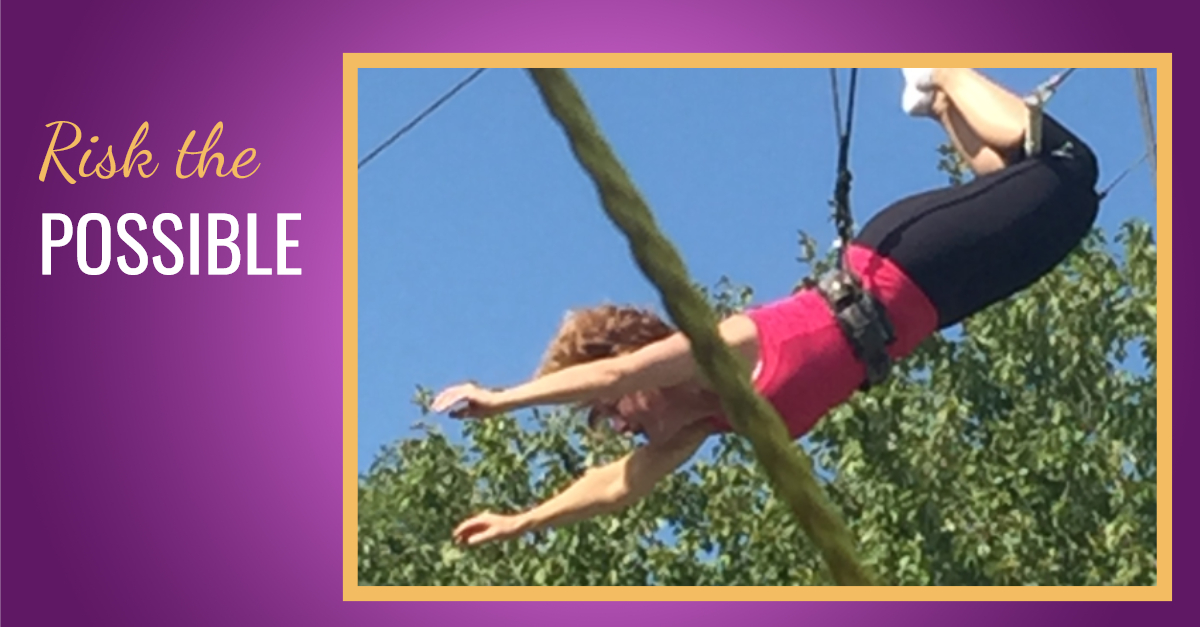I was in a meeting this morning with a colleague I highly respect and have worked with for years. As we were discussing different options for a potential client, he made the comment about “The Art of the Possible”. He mentioned it as we talked about helping to educate and navigate our clients in areas that they may not have considered.
The Art of the Possible, in my opinion, is looking at all of the facts, tools, and talents that you bring to the table, comparing that with everything that is available to you, then getting creative and identifying all of your options.
One of my favorite movie scenes is from Apollo 13. After it’s discovered that there is a problem with the ship, a team is brought to a conference room and a box of parts is dumped on a table. The team is tasked with using those parts – and only those parts – to find a fix for the ship. And they did. They found the Possible.
Mark’s comment got me thinking about how frequently we impose (or assume) limitations – that may not actually exist. Do we consider The Art of the Possible enough?
Products & Solutions
Our products (or client solutions) are probably the areas with the least amount of resistance to envisioning the Possible. We have to continually evolve our products to meet the changing options/trends/requirements/consumer demands out there, right?
Some products naturally find an end of life (floppy discs, anyone?). Others products have successfully changed and adapted over the years.
Coca-Cola, for example, was first served in 1886 – and included coca (a source of cocaine). That’s something that is not just frowned upon now, it’s illegal. But I think that we can agree that the product evolution has been fairly successful. Some changes have been less successful than others (Coke Zero) – but I don’t think this product is in danger of obsoletion any time soon.
It can sometimes be challenging to look at your own products – or solutions – and objectively see what’s possible (especially if you have a certain level of ownership or ego associated with it). But there is feedback all around when you consider sales results, customer feedback, even laws. These are a few areas that will let you know when it is time for a change – and sometimes specifically what must change.
Business
Just because we’ve never done it this way, doesn’t mean that we can’t – or shouldn’t. When was the last time that you considered what may be possible in your organization?
For HL Group, changes in market demands have shifted our business from being purely a supply chain solution provider to now being a manufacturer of mobile inventory software. We still provide supply chain solutions but saw the possibilities in offering our own software product. And now we’re running with it.
That’s change on the macro level. But many smaller possibilities are actually present throughout organizations. It’s sometimes hard to see when you’re in the middle of things – or have always done things a certain way.
That’s where the fun of being software solution consultants comes in. We get to sit down with people and look at their challenges with a fresh set of eyes and help them to see what may be Possible.
While it can be helpful to have outside consultants coach you through the possibilities. If you can step back from a problem/situation that you’re trying to solve or improve and creatively look at all of your options – sometimes you’ll find your Apollo 13 moment too – and find what’s Possible.
Ourselves
Many of us were raised with the message that “You can be anything that you want to be”. I heard over and over that if I worked hard, I could do anything.
This message seems to lose a lot of its plausibility as we get older. Maybe we’re set in our ways. Maybe we’ve been knocked down enough that we’re hesitant to try something new. Or maybe acknowledging the fact that I’m a 5’4” woman in her 40s means that, no matter how hard I work, I’ll never be a starting quarterback for the Vikings.
However, when you look at all of the tools and talents that you bring to the table, you might find there are many different possibilities for you out there. One of our strongest developers became a programmer after years of being an auto mechanic. He had the talent, the discipline, and the drive to do it – and he did. He saw what was Possible.
There are many possibilities that are smaller. When I was little, I wanted to be a circus acrobat. At this point, that type of career change is probably not a good idea – especially given my age and financial responsibilities (and a desire to reach my 50s). What was possible, though, was taking flying trapeze lessons. So I got a taste of the thrill of the circus without quitting my day job – and making it to my 50s is still on the table.
It’s easy to get bogged down by day-to-day life and putting out the fires in front of us. But I personally think that it isn’t a bad idea to take the time and stop to look at things – your products, your services, your business, yourself – and consider what may be Possible.
I agree with Mark that finding the Possible is an Art. And I think that it is one that isn’t practiced or appreciated nearly enough.
_______________
Anne Hale is our Director of Client Services. She manages our client engagements, works with Wes Haubein on sales and marketing and has determined that swinging on a trapeze is anything but “flying through the air with the greatest of ease”.




